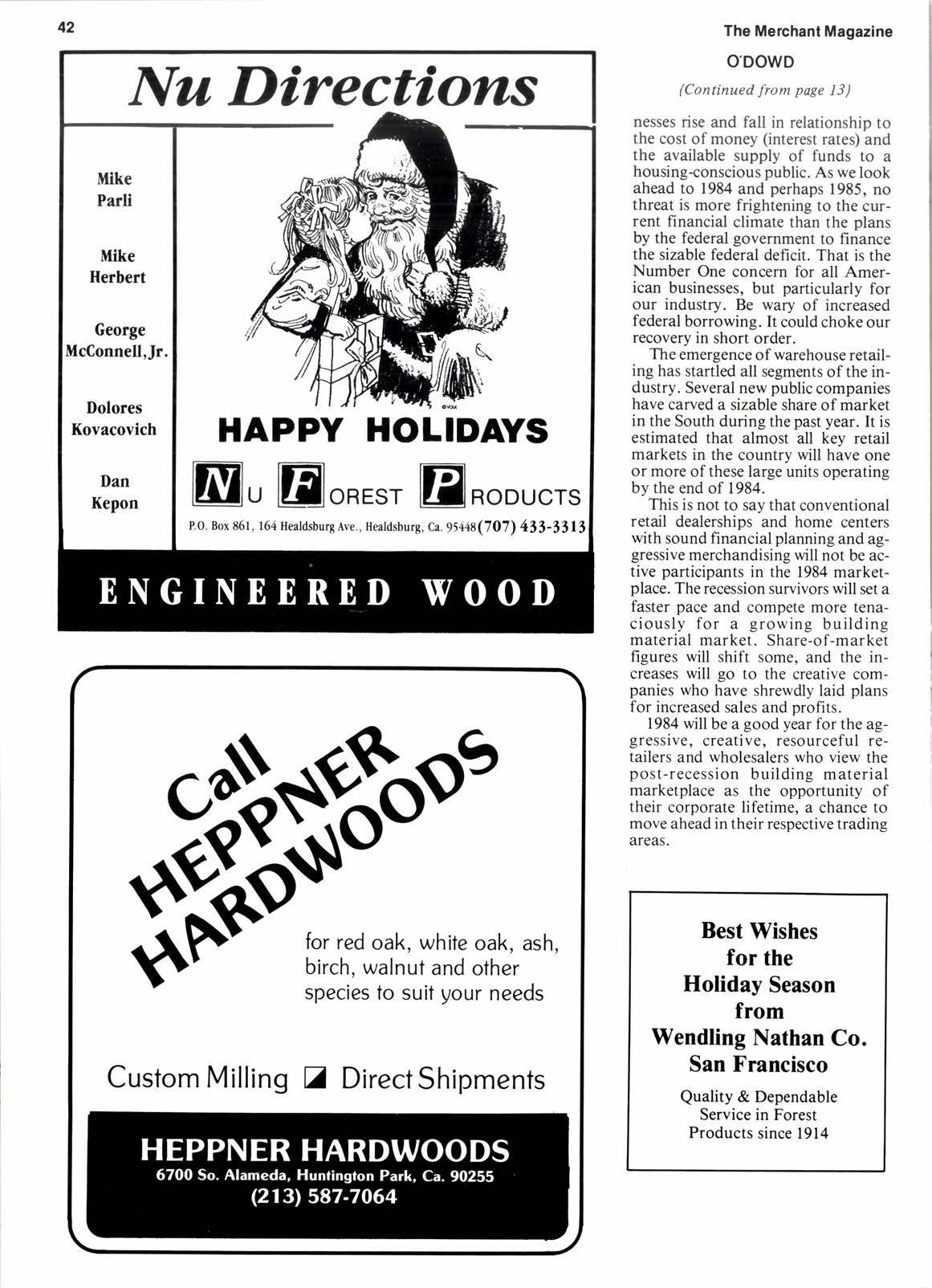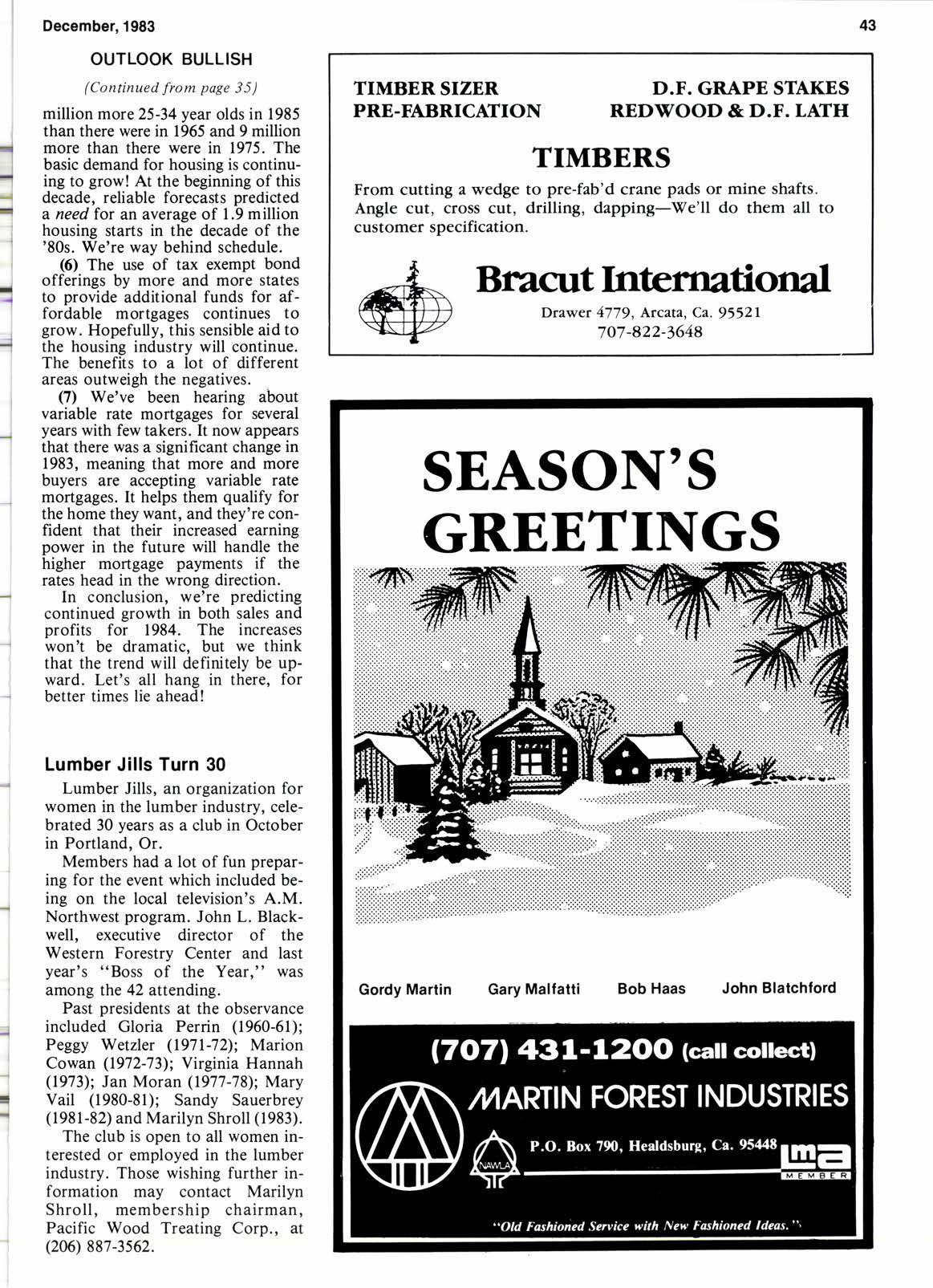
2 minute read
Nu Directio?os
(Continued from page l3) nesses rise and fall in relationship to the cost of money (interest rates) and the available supply of funds to a housing-conscious public. As we look ahead to 1984 and perhaps 1985, no threat is more frightening to the current financial climate than the plans by the federal government to finance the sizable federal deficit. That is the Number One concern for all American businesses, but particularly for our industry. Be wary of increased federal borrowing. It could choke our recovery in short order.
The emergence of warehouse retailing has startled all segments of the industry. Several new public companies have carved a sizable share of market in the South during the past year. It is estimated that almost all key retail markets in the country will have one or more of these large units operating by the end of 1984.
This is not to say that conventional retail dealerships and home centers with sound financial planning and aggressive merchandising will not be active participants in the 1984 marketplace. The recession survivors will set a faster pace and compete more tenaciously for a growing building material market. Share-of-market figures will shift some, and the increases will go to the creative companies who have shrewdly laid plans for increased sales and profits.
1984 will be a good year for the aggressive, creative, resourceful retailers and wholesalers who view the post-recession building material marketplace as the opportunity of their corporate lifetime, a chance to move ahead in their respective trading areas.
Outlook Bullish
(Continued from page 35) million more 25-34 year olds in 1985 than there were in 1965 and 9 million more than there were in 1975. The basic demand for housing is continuing to grow! At the beginning of this decade, reliable forecasts predicted a need for an average of l.9 million housing starts in the decade of the '80s. We're way behind schedule.

(6) The use of tax exempt bond offerings by more and more states to provide additional funds for affordable mortgages continues to grow. Hopefully, this sensible aid to the housing industry will continue. The benefits to a lot of different areas outweigh the negatives.
(7) We've been hearing about variable rate mortgages for several years with few takers. It now app@rs that there was a significant change in 1983, meaning that more and more buyers are accepting variable rate mortgages. It helps them qualify for the home they want, and they're confident that their increased earning power in the future will handle the higher mortgage payments if the rates head in the wrong direction.
In conclusion, we're predicting continued growth in both sales and profits for 1984. The increases won't be dramatic, but we think that the trend will definitely be upward. Let's all hang in there, for better times lie ahead!
Lumber Jills Turn 30
Lumber Jills, an organization for women in the lumber industry, celebrated 30 years as a club in October in Portland, Or.
Members had a lot of fun preparing for the event which included being on the local television's A.M. Northwest program. John L. Blackwell, executive director of the Western Forestry Center and last year's "Boss of the Year," was among the 42 attending.
Past presidents at the observance included Gloria Perrin (1960-61); Peggy Wetzler (1971-72); Marion Cowan (1972-73); Virginia Hannah (1973); Jan Moran (1977-78); Mary Vail (1980-81); Sandy Sauerbrey (1981-82) and Marilyn Shroll (1983).
The club is open to all women interested or employed in the lumber industry. Those wishing further information may contact Marilyn Shroll, membership chairman, Pacific Wood Treating Corp., at (206\ 887-3s62.
TIMBER SIZER PRE-EABRICATION
D.F. GRAPE STAKES REDWOOD & D.F. LATH
Timbers
From cutting a wedge to pre-fab'd crane pads or mine shafts. Angle cut, cross cut, drilling, dapping-We'll do them all to customer specification.
Bracrrt Internationd
Drawer 4779, Arcata, Ca. 95521 707-822-3648










